#living on the river agano
Text
新潟県
Japanese Prefectures: Chūbu - Niigata
都道府県 (とどうふけん) - Prefectures of Japan
Learning the kanji and a little bit about each of Japan’s 47 prefectures!
Kanji・漢字
新 あたらしい、あらた、にい~、シン new
潟 かた、がら lagoon
県 ケン prefecture
中部 ちゅうぶ Chūbu, Central Japan, the central region of Japan
Prefectural Capital (県庁所在地) : Niigata (新潟市)

Niigata Prefecture is famous for its high-quality rice, sake, spectacular fireworks displays in winter, skiing in winter, and hot springs year-round. Niigata lies along the Sea of Japan and includes the offshore islands of Sado and Awa. Silt deposited by the Shinano and Agano rivers has created the lowlying Echigo Plain in the central part of the coastline, where the majority of the prefecture's population live. Most of the cities are along the coast as the rest of the prefecture is mountainous.
Recommended Tourist Spot・おすすめ観光スポット
The Katakai Fireworks Festival - 片貝まつり

Katakai Fireworks Festival (source)
The Katakai Fireworks Festival is an annual autumn celebration at Asahara Shrine. Fireworks serve as dedications to the shrine, with individuals and companies expressing their sentiments by contributions to the display. The display contains the "yonshakudama" firework, the world's largest firework with an 800-meter diameter, and is listed in the Guinness Book of World Records.
In the morning, the town of Katakai is full of traditional events like the dedication of firework balls to Asahara Shrine, and rituals praying for the success and safety of the upcoming display.
Other fireworks festivities include the Gion Kashiwazaki Festival Sea Fireworks (July 26th) which illuminates the night sky over the sea; the Nagaoka Festival Grand Fireworks Show (August 2nd & 3rd) which unfolds along the banks of the Shinano River; and the winter display of Echigotsumari Fireworks in the snow (Late February) where fireworks color ethereal flower fields of light on snowy plains.
Regional Cuisine - 郷土料理
Hegi-soba (Buckwheat noodles) - へぎそば

Hegi-soba (source)
Soba is usually made with soba flour and wheat; however, this Niigata style soba is made by mixing a type of seaweed called funori with the seaweed. Soba originated in the Edo period, and in Niigata soba was made in an area called Uonuma. Uonuma didn't grow wheat, and so often local vegetables like ground burdock root were added to the soba flour to make noodles instead. In addition to soba, Uonuma was famous for its beautiful textiles, and when weaving the cloth, funori would be ground up and applied to the weft to stiffen the fibers and make the process easier. Someone must have come up with the idea to add funori to soba flour one day, and hegi-soba was invented.
Like zaru-soba, hegi-soba gets its name from the rectangular serving tray in which it is served. The verb hagu means to strip or peel, and in many dialects of the Kanto region it is pronounced hegu. The trays made from planed wood were called hegi. Thus the soba, wound by hand into bite-sized portions and layered on the tray, is called hegi-soba.
The funori makes the noodles a little more slippery than regular soba noodles but the taste doesn't differ much. The best way to enjoy hegi-soba is to dip the noodles into the dipping sauce, or mentsuyu, to get a base flavor. Then, try it with some hot Chinese mustard: Spread a little mustard on the soba, then dip the soba into the mentsuyu without letting the mustard and mentsuyu mix. Next, add sliced green onions to the mentsuyu and dip in your noodles. Finally, add some ground sesame seeds to the mentsuyu and try out that taste.
Hegi-soba is the pride of Niigata, such that you can get a special Soba Ticket in the city of Tokamachi, which gives you two 500-yen vouchers for soba, usable at 14 different restaurants in the city.
Niigata Dialect・Niigata-ben・新潟弁
Niigata-ben has three different classifications - two on the mainland (Tōkai-Tōsan dialect and Tōhoku dialect) and one on Sado Island (Sado dialect).
あちこたねぇ achi kota nee
Standard Japanese: たいしたことない、大丈夫、心配ない (taishita koto nai, daijyoubu, shinpai nai)
English: trivial, not amounting to much, it's okay, don't worry about it
あちこたねぇよ、きっと大丈夫だから
achi kota nee yo, kitto daijyoubu dakara
心配ないよ、きっと大丈夫だから
shinpai nai yo, kitto daijyoubu dakara
Don't worry, it's going to be okay
2. かんべんね kanben ne
Standard Japanese: ごめんね (gomen ne)
English: I'm sorry
あー!かんべんね。忘れちゃった。
aa! kanben ne. wasurechatta.
あー!ごめんね。忘れちゃった。
aa! gomen ne. wasurechatta.
Ah! I'm sorry. I forgot.
3. ごおぎ (gougi)
Standard Japanese: 大変、ものすごく (taihen, monosugoku)
English: immense, greatly
これはごおぎ難しいね
kore wa gougi muzukashii ne
これはものすごく難しいね
kore wa monosugoku muzukashii ne
This is very difficult, isn't it
4. なじらね (najirane)
Standard Japanese: いかがですか、調子はどうですか
(ikaga desu ka, choushi wa dou desuka)
English: how are you, how are things
A: 今日はなじらね?
kyou wa najirane?
B: ばっかいいて~
bakka ii te~
A: 今日は調子どう?
kyou wa choushi dou?
B: すごくいいよ~
sugoku ii yo~
A: How are you doing today?
B: Really good~
5. そいがー (soi gaa)
Standard Japanese: そうなんだ (sou nan da)
English: oh really, oh I see
A: この前ぽんしゅ館に行ってきたて~
Kono mae Ponshukan ni itte kita te~
B: そいが?
Soiga?
A: この前ぽんしゅ館に行ってきたんだよ
Kono mae Ponshukan ni itte kitanda yo
B: そうなの?
Sou na no?
A: The other day I went to Ponshukan*
B: Oh really?
*Note: Ponshukan shops are located inside three major JR stations in Niigata, this sake "theme park" where you can sample leading local sake brands, purchase sake-related goods, and even soak in a sake hot spring bath.
More Niigata dialect here (JP).
#japanese prefectures#日本語#japanese#japanese language#japanese langblr#langblr#studyblr#都道府県#新潟県#niigata
102 notes
·
View notes
Text

In a sense, the real litmus test of any anime is usually not its first episode, but its second. Thankfully, Train to the End of the World's is quite good.
With this episode Shuumatsu Train establishes what I imagine will be a template it works off of for much of the rest of the season. The episode's first half is largely dialogue-driven, focusing on the characters playing off of each other in both dramatic and serious ways.
We get a lot of goofy stuff here, for sure, since Shuumatsu Train clearly wants to be a funny anime in addition to all the other stuff it's doing, but we also get a surprising amount of genuine tension; it's implied that these girls have been each other's only friends for years, and because of that they can easily poke at each other's insecurities if they get angry with each other, which Reimi and Akira in particular absolutely seem perfectly willing to do. Which, honestly, who can blame them given the situation they now find themselves in? Far from home with minimal food, money, etc. It's a tough spot!
The first Weird Thing the girls come across is relatively harmless. This guy paddling his duck boat up and down the river seems, briefly, like an indication that the girls' journey will perhaps not actually be *that* dangerous. Despite this, he gives a genuine and serious warning to the girls about what's left of the world outside of the train line along which they live. (Akira promptly shoots him down, claiming his warning is a poor imitation of a monologue from absurdist theater. This is Shuumatsu Train smacking itself in the face to make you laugh again, said theatrical tradition is a big influence, directly or indirectly via other anime, on a lot of the anime this series is taking cues from.)
The real capital-M Moment is toward the end of the episode though, when a tsunami threatens to overtake the train and drowns the railway behind them. Their tentative plan of going back to Agano to more properly prepare is thus fully rendered impossible, and it's made clear that there is no way but forward. I think this is Shuumatsu Train again signalling its themes of pushing forward an growing up in a world that is indifferent or actively hostile toward you. Also! I like the symbolism of the plant that Nadeshiko brought along growing into their emergency food supply. She definitely seems to be the "mom friend" of the group despite perhaps lacking the strong convictions of the other three, it's cool to see that play out directly in the show's worl.
Also also! Someone on reddit pointed out that the map the girls get from the hermit appears to foreshadow the nature of each of the train stops, given that we immediately meet people with mushrooms growing out of their heads for the closing scene here. I'm really interested to see where that goes. Great episode, great show.
5 notes
·
View notes
Photo
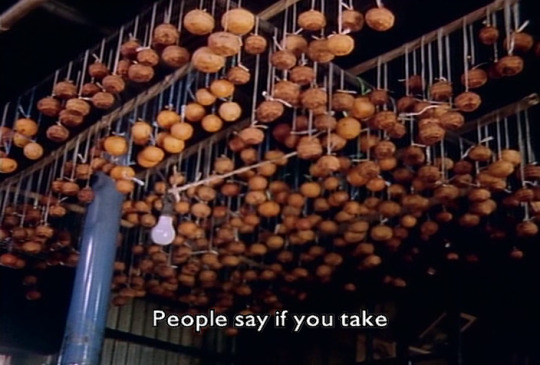
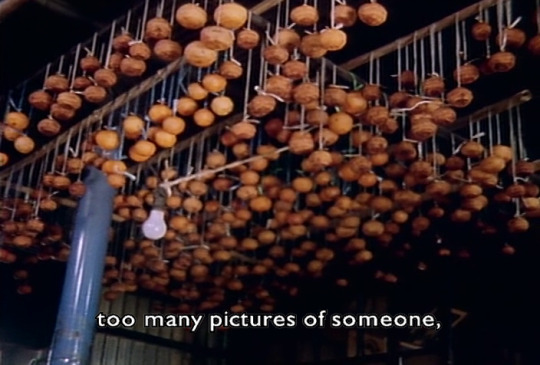
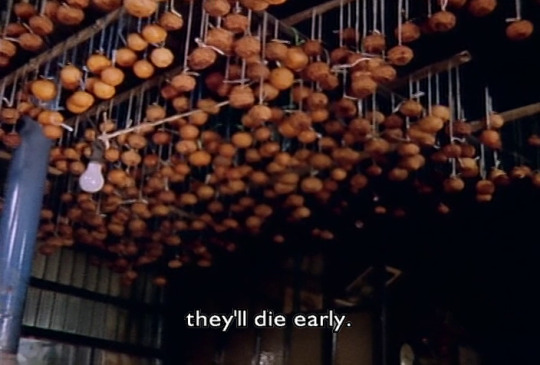
Makoto Satō - Living on the River Agano (1992)
177 notes
·
View notes
Text




Living on the River Agano (Makoto Sato, 1992)
5 notes
·
View notes
Photo

Living on the River Agano (Sato Makoto, 1992) ogawa-style embed-yourself-in-the-community-filmmaking on ageing populations of river towns'that had their own minamata disaster. but that’s less interesting than the intangible cultural assets these people are, and the scenes of boat building, rice farming, hook fishing we get to be present at. artists at work - a theme he’d go on to explore more in his later films.
3 notes
·
View notes
Photo

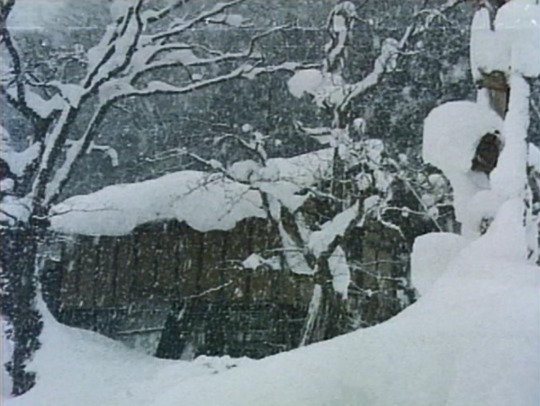
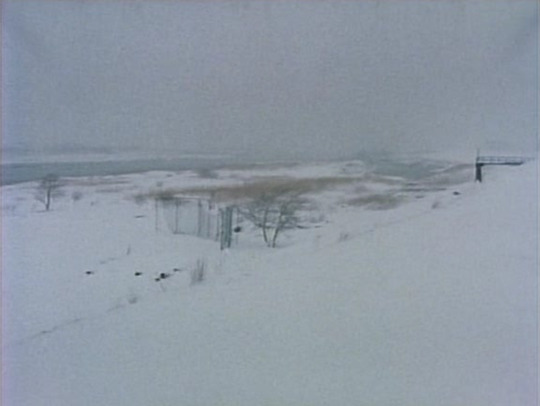


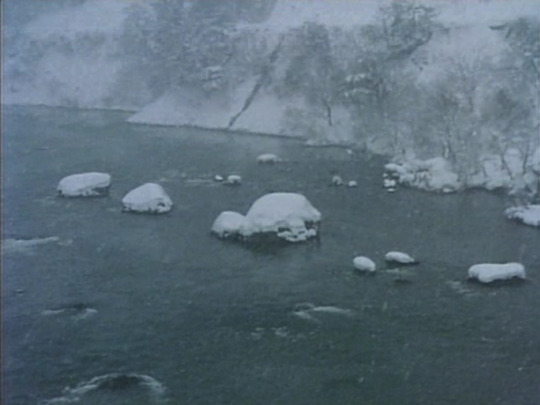
Living on the river Agano (阿賀に生きる), Makoto Satō, 1992
131 notes
·
View notes
Photo






Living on the River Agano (Sato Makoto, 1992)
17 notes
·
View notes
Photo



Makoto Satō - Living on the River Agano (1992)
26 notes
·
View notes
Photo







Makoto Satō - Living on the River Agano (1992)
21 notes
·
View notes